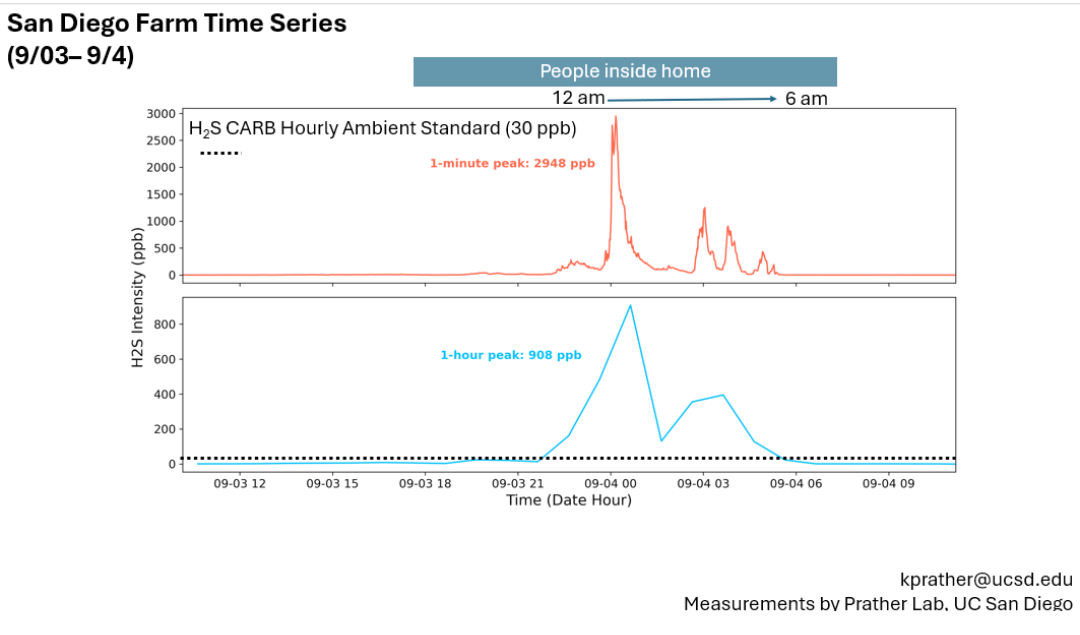
The County of San Diego today hosted an emergency press conference to address ongoing concerns about air quality in the South Bay related to the Tijuana sewage crisis.
Yesterday, the county deployed its hazardous incidents response team to the polluted Tijuana River Valley after researchers said they found alarming levels of hydrogen sulfide and cyanide in the air.
But the county says there is no imminent threat to public safety.
“The county has not received, as of now, any data that indicates a public safety concern,” said Nora Vargas, chair of the San Diego County Board of Supervisors.
The hazmat team worked alongside researchers from the University of California San Diego and the University of San Diego, who have publicly raised the alarm about toxic gasses in the air in recent days. They recently summoned the Robotics Emergency Deployment (RED) Team after detecting alarming gas in the air.
“The Hazardous Incident Response Teams (HIRT) were there yesterday during the day and night, working side by side with these researchers and the RED Team from Austin,” said Dr. Ankita Kadakia, interim public health officer for the county. “Staff have told me since then that during the day time and night time, gas levels for hydrogen cyanide were not elevated. Our HIRT team did detect hydrogen sulfide, which has also been reported by the researchers. The HIRT team reported that the readings were in average ranges, and that there were some elevations. However, the readings for both hydrogen sulfide and hydrogen cyanide did not suggest imminent danger or threat.”
The researchers raising the alarm, however, were not convinced.
“I have a well established track record in air measurements for 32 years,” said Dr. Kimberly Prather on X, formerly known as Twitter. “It is deeply disturbing to see a politician who is not an air expert try and smear the reputation and efforts of those of us who are the experts working around the clock trying to help this community. Why?”
Prather, a distinguished chair of atmospheric chemistry at UC San Diego, is leading a team of about 50 researchers in a 5-week study on air and water quality in the region, which began Aug. 19 and is slated to conclude on Sept. 20. Prather was a lead researcher on a study finding that bacteria from sewage in the ocean is aerosolized in surf.
Prather said at a press conference that her team detected a spike of 30 to 100 times more hydrogen sulfide than is safe (a threshold of 30 parts per billion in the air for over an hour). Researchers also detected hydrogen cyanide. Both gasses are toxic at a certain concentration.

Prather’s team detected the spike in hydrogen sulfide and presence of hydrogen cyanide last week. The county was not measuring air quality then, as it summoned hazmat teams in wake of the researchers’ findings. But Vargas she said the county’s reads this week have remained within the threshold of public safety.
“Vargas’s claim directly contradicts not only our calibrated, validated hydrogen sulfide data but also the numerous health complaints from South Bay residents, including migraines, respiratory issues, and (gastrointestinal) problems,” Prather said in a separate statement on X. “It’s deeply concerning that a public official trusted by the community to protect their health would make such a misleading statement based on an unverified set of measurements from an unknown location and device with no critical details (where? how long? how many, how much?) while dismissing multi-day comprehensive air quality monitoring results.”
Kadakia, the county’s interim public health officer, said that the county will share its data once it is packaged in a way that is easy to interpret. County leaders said they were working quickly to address public concern, and would release more information in the coming days. Vargas said multiple times that the sewage crisis is unacceptable and highlighted its advocacy in the matter.
“People should not have to live in a community, or raise their children in a neighborhood, where this becomes a way of life,” Kadakia said.
Meanwhile, on Sept. 8, the San Diego County Air Pollution Control District issued a notice about strong odors in the South Bay.
“The current extreme heat is exacerbating ongoing odor issues in the Tijuana River Valley and surrounding communities,” the notice reads. “Compounds associated with these odors may cause adverse health effects. Residents near the affected areas who notice strong odors are advised to limit outdoor physical activity. Whenever possible, remain indoors, especially if you have respiratory or heart conditions, are elderly, or have young children in your household.”
Kadakia reiterated this advice. She said that the human nose is very sensitive to hydrogen sulfide, the gas that is responsible for the rotten eggs small South Bay residents have been burdened with. Exposure to the gas could cause nausea and headaches in some individuals, Kadakia said.
Vargas said that solving the issue is one of the county’s chief priorities, and that it must be solved with collaboration. She has been a vocal advocate for addressing the sewage crisis, and, alongside County Supervisor Tara Lawson-Remer, pushed for the county to declare it a state of emergency.
She said the county is working to acquire more air filters to distribute to local residents, pushing for rehabilitation of the South Bay International Wastewater Treatment Plant, and applying for grant money to restore the polluted Tijuana River Valley.
Prather, however, was not convinced.
“While stating she would like to collaborate with everyone, she and her team have repeatedly refused all of our offers (by a multi-institution team of close to 50 scientists) to help,” Prather said. “This is prolonging the ongoing suffering of this highly under-represented community.”




